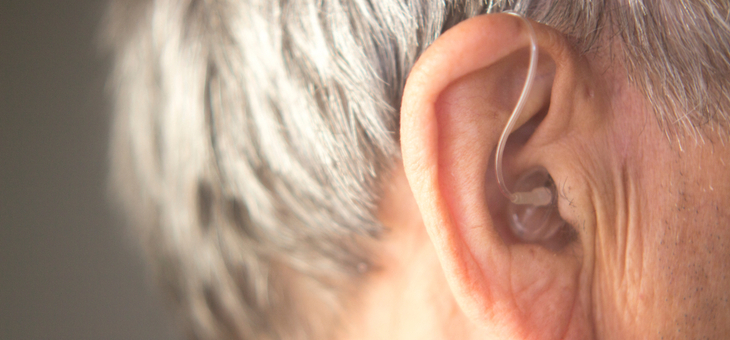“Put your bloody hearing aids in Max,” yells Jenny after my fourth “what was that dear?”
The truth is that I honestly didn’t like wearing them, until recently. I used to wear the in-ear type. Each earpiece was a solid ‘plastic’ moulded device fitted with replaceable battery. They totally filled the outer ear canal, were uncomfortable and led to aching with prolonged use. The devices constantly became blocked with wax, rendering them useless until they were cleaned and the filter changed.
So, most times, I purposefully forgot to wear them.
Frequently, on our way out somewhere, Jenny would ask, “Did you put them in?”
“Oh, bugger, I forgot,” I would say, trying to sound genuine.
If looks could kill!
Without the aids, I struggle, not with volume, but with comprehension. I can’t understand TV dialogue, so I need the subtitles on, much to the annoyance of Jenny. I can’t understand a conversation when in a crowded room or restaurant where there is a lot of background noise. Even sitting in the rear car seat makes it near impossible to understand someone talking from the front.
A consequence of hearing loss is that you tend to zone out of group conversations, or just nod, not understanding much at all. Most times you pick up a few words and your brain puts together what it thinks is the gist of the conversation. There is a great tendency to lip-read and attempt to interpret facial expression. Sometimes you get it completely wrong and ask a question to which a person has just told you the answer. This creates a lot of strange looks. Very embarrassing!
I have what is called industrial deafness, after years of working with mechanical woodchip refining equipment, as part of my job as a scientist with CSIRO. In those early days, occupational health and safety wasn’t a priority and hearing protection wasn’t mandatory. Over the years, the higher frequency sounds have deteriorated by 70 per cent in both ears. Fortunately, I am on a Comcare program and the cost of my aids is subsidised.
Okay, well why did I get the in-ear hearing aids in the first place, you might ask?
I’ll fess up – because of vanity. I didn’t want those things that hang over the ears – the ones that everyone looks at and thinks you’re an old fart. So, I put up with these other horrible things for over five years. Prior to this I had older technology hearing aids – also the in-ear type. They were also uncomfortable and pretty much useless for me.
There is strong scientific evidence that people with severe hearing loss (gulp, me!) are five times more susceptible to developing dementia. Most dementia sufferers are over 70 (another gulp!) and three-quarters of this group have hearing loss. Further evidence suggests that the wearing of hearing aids can reduce the risk and impact of dementia, and other associated issues such as falls and depression.
Elderly people with hearing loss should try to avoid potential changes in the brain that lead to dementia. They need to maintain and strengthen the brain’s network. Wearing hearing aids is one way to assist this process.
A few months ago, I figured I would have to do something about my situation. I returned to my audiologist for testing. The results showed that my ‘good’ ear had deteriorated to the same level as my ‘bad’ one. Well, at least now I feel like I’m a balanced person!
After a long procedure toing and froing between the audiologist and Comcare, I received my whizz-bang over-the-ear hearing aids combining the latest bluetooth technology. These devices will change my life. I will no longer be a candidate for dementia (says he, who is becoming more forgetful as time passes – now what did I come in here for? Maybe the damage has already been done).
These new hearing aids have rechargeable batteries, so they are fully charged when I put them on each morning. The bluetooth means that I can tune in to the TV with a device, which is supplied with the aids, and I can adjust the volume to suit me via a mobile phone app.
The sound from the TV can also be adjusted by others without affecting my volume.
Also, what I love about the bluetooth feature is that I can listen to my Spotify music all day and/or use my mobile phone. Call me Saint Max because I’ve been wearing the aids every day since mid-March for up to 14 hours a day. I’m in the good books with Jenny – big time.
I think my brain and ears are slowly adjusting to the hearing aids. My audiologist said it would take about six months for the brain to fully respond. The initial echoing, sore ear canals and itching have all subsided, and I’m sure you’ll all be happy to hear that I’m over the OFS (old fart syndrome).
The fact that I can hear conversations clearly, can hear the TV without the need for subtitles and can chill out with my music whilst walking in the park, is a blessing.
Moreover, I am more content and happier now that Jenny doesn’t hound me to “put them in”.
Footnote from Jenny – Hallelujah is all I can say!!
If you’d like your hearing tested or to try a new type of hearing aid, why not visit Hearing Aid Finder?
If you enjoy our content, don’t keep it to yourself. Share our free eNews with your friends and encourage them to sign up.
Related articles:
Persevering with hearing aids
Hearing loss explained
Introducing out-of-sight hearing aids

